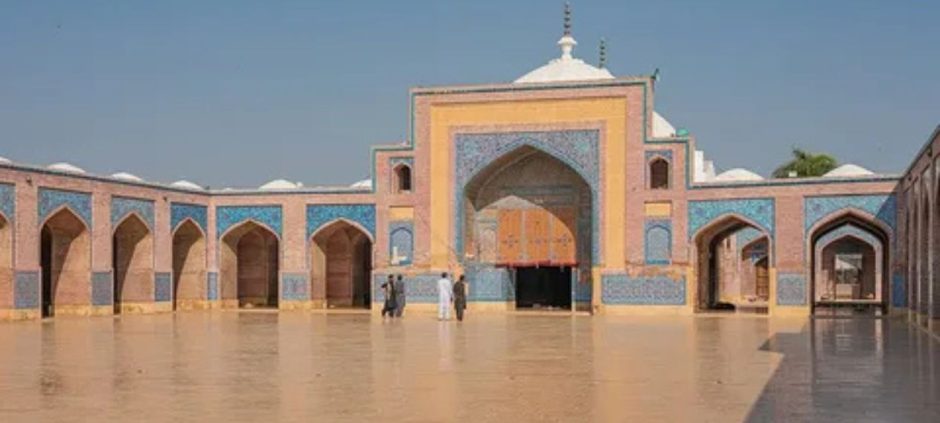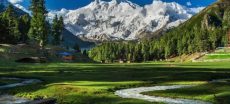If walls could speak, the Shah Jahan Masjid Thatta would tell stories of centuries gone by. Standing proudly in the heart of Sindh, this mosque is not just a place of worship; it’s a canvas of history, art, and sheer craftsmanship. For travelers, historians, and photography enthusiasts, it’s a dream destination that feels both peaceful and inspiring.
Visiting this majestic mosque is more than a sightseeing trip. Every brick, tile, and arch whispers tales of Mughal splendor, while the light that filters through its intricately carved windows creates moments photographers can’t resist capturing.
A Peek Into History
Built in the 17th century during the reign of Emperor Shah Jahan, the mosque reflects Mughal architectural brilliance at its peak. Unlike other mosques, it doesn’t rely on towering minarets alone; the beauty lies in the subtle details. Its 93 domes are covered in elaborate blue and white tiles arranged in floral patterns. Each tile was carefully designed to create symmetry that feels both complex and harmonious.
The mosque has seen centuries of change, yet it has retained its charm and structure, making it a timeless symbol of Thatta’s rich history. For history buffs, wandering its courtyards is like walking through a living museum, where every corner has a story waiting to be discovered.
Architectural Marvels That Leave You Stunned
The Shah Jahan Masjid Thatta is a feast for the eyes. Its arches, domes, and prayer halls are decorated with vibrant frescoes and mosaic patterns that are truly mesmerizing. What makes it stand out is the way sunlight interacts with its structure. Early morning or late afternoon light transforms the mosque, creating shadows and highlights that bring the architecture to life.
Notice how the central prayer hall is perfectly proportioned. The symmetry of the arches, the repetition of the domes, and the detailed floral tile work create a sense of balance that is hard to find elsewhere. It’s a reminder that architecture can be both functional and artistic.
Why Photographers Can’t Resist
For photography lovers, Shah Jahan Masjid Thatta is a paradise. Here’s why:
- Every angle tells a different story. You can shoot the mosque’s grand domes from the courtyard or focus on the intricate tile patterns up close.
- The interplay of light and shadow changes throughout the day, offering endless opportunities for unique shots.
- Wide-angle lenses capture the mosque’s scale, while macro lenses reveal the delicacy of the tile work.
Pro tip: Try visiting during sunrise or just before sunset. The soft light not only enhances your photographs but also adds a magical atmosphere to the mosque’s serene environment.
Exploring the Surroundings
The mosque is located in Thatta, a city known for its historical significance. Beyond the mosque, visitors can explore local bazaars, traditional handicraft shops, and streets that carry echoes of the past. The area is perfect for street photography or capturing candid shots of local life.
Remember, the mosque is a place of worship, so be respectful of prayers and timings. Modest attire is recommended, and it’s always appreciated if you ask before taking close-up pictures of worshippers.
Tips for Capturing the Perfect Shot
Photography at Shah Jahan Masjid Thatta can be both fun and challenging. Here are some practical tips:
- Use a tripod for low-light shots, especially in the early morning or evening.
- Experiment with angles, sometimes shooting from the ground up emphasizes the grandeur of the domes.
- Focus on details, the tile work, arches, and mosaics are as fascinating as the overall structure.
- Include people, adding locals or tourists in your frame can provide scale and life to your photos.
- Respect light conditions; harsh noon light can flatten colors, so choose soft, diffused light whenever possible.
Quick Tip: Even if your camera is basic, the mosque’s colors and details will still make your photos Instagram-worthy.
Cultural and Religious Significance
The mosque is not just a photography hotspot. It continues to serve as a center of spiritual gatherings and daily prayers. In fact, the Punjab government recently announced monthly stipends for mosque imams, a step to support religious leaders across Pakistan, which also helps maintain places like the Shah Jahan Masjid Thatta for visitors and worshippers alike.
Being part of this living heritage adds depth to your visit. You’re not just seeing architecture; you’re witnessing traditions that have endured for centuries.
Best Time to Visit
While the mosque is beautiful year-round, the ideal times are:
- Winter Mornings: Clear skies and cooler weather make exploring comfortable.
- Sunrise or Sunset: Perfect for photography and for soaking in the peaceful atmosphere.
- During Festivals: You can experience the mosque as locals do, but expect more crowds.
Avoid the peak summer heat if possible, as Thatta can get quite warm, making walking around less enjoyable.
Ever tried capturing the perfect sunrise photo only to have the sun hide behind clouds? At Thatta, every day is a new surprise.
Experience It Yourself
Shah Jahan Masjid Thatta is more than a tourist spot; it’s a masterpiece of history, culture, and art. Whether you’re a photographer chasing the perfect light, a history lover exploring Mughal heritage, or someone seeking peace in stunning surroundings, this mosque has something to offer everyone.
Next time you plan a trip in Sindh, don’t skip Thatta. Walk its courtyards, capture its beauty, and let yourself be amazed by the stories that each dome and tile tells. Visiting Shah Jahan Masjid Thatta is an experience that stays with you long after you leave.











